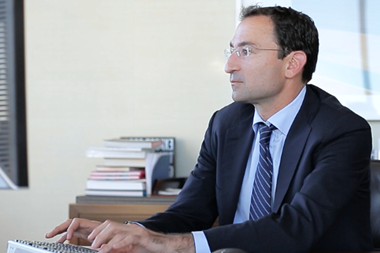It’s hard to believe we are already half way through 2023. It feels like only yesterday we were ringing in the new year and taking down the Christmas decorations and yet here we are at the summer holidays.

We entered 2023 under the spectre of a moderate recession, with high inflation and rising interest rates putting downward pressure on growth. While we have managed to narrowly avoid a recession thus far, inflation has remained stubbornly high and interest rates continue to rise bringing the cost-of-living crisis under ever greater scrutiny. This, coupled with the collapse of two large US regional banks and an international bank, has provided a complex backdrop for the real estate market and has certainly made for an interesting start to the year.
Looking ahead, higher interest rates, the squeeze on disposable incomes and international headwinds mean we anticipate the UK economy will remain broadly flat in 2023, with the possibility of recession still a threat. The outlook for 2024 is better, with an improved inflationary environment expected to restore consumer confidence, leading to an uptick in purchasing power and driving the start of a recovery.
Despite this, the lagged effect of interest rate rises will continue to drag on growth, and we are forecasting gross domestic product to grow by a modest 0.9% in 2024 and 2.2% in 2025. The Bank of England should begin to cut rates as inflation declines and priorities shift to supporting long-term growth. We remain optimistic that interest rates will peak at 5.75% in Q4 2023.
The subdued economic forecast means we aren’t expecting any notable recovery in capital values for the remainder of the year, and it remains the case that it is income returns not capital growth that is driving commercial real estate returns. Transactions have fallen significantly, foreign investment activity has been unusually low, with circa 30% of volumes in Q1 2023 attributable to cross-border purchases, and capital raising for new funds has notably slowed.
However, an uptick in transactional activity is expected as we enter the second half of the year and some investors will come under pressure to deploy capital. The rapid repricing seen in the UK relative to other international markets should stand the UK in good stead and make it an attractive proposition.
Any recovery is likely to be uneven, with residential, logistics and operational assets well positioned to fare the best, both in terms of market activity and capital value growth. A divergence in the fortunes of prime versus secondary assets will be evident across all sectors as investors make a flight for quality.
High costs of debt have been another challenge hampering market activity. The cost of debt will remain expensive compared with recent years, which will continue to pose issues, especially for those investors needing to refinance. Despite that, we believe the debt market will remain reasonably active, with the greatest liquidity available for the residential, logistics and life sciences sectors. Some borrowers will need to inject more equity to facilitate refinancing and other borrowers may need to reduce their leverage following a move in values.
Sustainability remains at the top of the real estate agenda, although it was disappointing that no clarification was made on how the government intended to proceed with its proposed plans to increase the Minimum Energy Efficiency Standards (MEES) earlier in the year. Furthermore, plans for how the UK is going to reach net zero by 2050 lacked widespread new measures to tackle energy inefficiency in existing stock – one of the biggest issues facing our industry.
Looking ahead, the focus must be on increasing sustainability data in the valuation process, allowing better interrogation of the costs and benefits of green building features and providing greater insight into how such features can protect assets from value depreciation. Moreover, mandatory biodiversity net gain regulation for development is set to come into force across England and Wales in November 2023 – developers will need to prepare for this new requirement and understand the cost implications.
To conclude, there is a glimmer of light at the end of the tunnel and as inflation continues its gradual decline, the market will start to gain momentum once again. It will be several years before investment volumes return to their peak, particularly for certain sectors of the market, and a recovery in pricing is likely to be slow but we are optimistic that the worst is now behind us.
Jen Siebrits is head of UK research at CBRE
































No comments yet